|
 Secure Site
Secure Site
|
 |
Archive for December, 2012
 Sharaku Toshusai, The actor Matsumoto Yonesaburo as Shinobu - Stay Calm, Be Thankful Write a gratitude list. If your average day feels more like a triathlon, saying a quick thanks can help you stay calm. According to a study in the journal Integrative Physiological and Behavioral Science, people who were coached to be more appreciative experienced a 23 percent drop in their levels of the stress hormone cortisol after a month. Before you tackle your to-do list, take a moment to jot down one thing you’re grateful for today.
Try Meditating More Often:
Although meditation can be done in almost any context, practitioners usually employ a quiet, tranquil space, a meditation cushion or bench, and some kind of timing device to time the meditation session. Ideally, the more these accoutrements can be integrated the better. Thus, it is conducive to a satisfying meditation practice to have a timer or clock that is tranquil and beautiful.
Using a kitchen timer or beeper watch is less than ideal. And it was with these considerations in mind that we designed our digital Zen Alarm Clock and practice timer. This unique “Zen Clock” features a long-resonating acoustic chime that brings the meditation session to a gradual close, preserving the environment of stillness while also acting as an effective time signal.
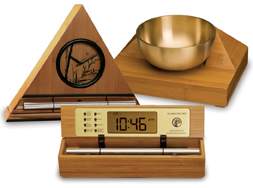 Time Your Meditation with a Gentle Bowl/Gong Timer from Now & Zen, Inc. Now & Zen’s Meditation Timer Store
1638 Pearl Street
Boulder, CO 80302
(800) 779-6383
Posted in Bamboo Chime Clocks, Chime Alarm Clocks, Meditation Timers, Meditation Tools, mindfulness practice, Well-being
 Yoshitoshi, Geisha at a Flower Festival, 1880 - Snooze More Soundly Unplug in the evening. According to a National Sleep Foundation (NSF) survey, 95 percent of people use an electronic device, such as a computer, just before bedtime. “But that can cause you to toss and turn,” says Russell Rosenberg, Ph.D., NSF chairman and director of the Atlanta School of Sleep Medicine. “The bright light from the screen delays the release of melatonin, a sleep-promoting hormone.” To snooze more soundly, switch off technology and try dimming the lights an hour before you aim to sleep.
 Snooze More Soundly Our Digital Zen Clock’s long-resonating Tibetan bell-like chime makes waking up a beautiful experience – its progressive chimes begin your day with grace. When the clock’s alarm is triggered, the acoustic chime bar is struck just once … 3-1/2 minutes later it strikes again … chime strikes become more frequent over 10 minutes … eventually striking every 5 seconds until shut off. As they become more frequent, the gentle chimes will always wake you up – your body really doesn’t need to be awakened harshly, with a Zen Clock you’re awakened more gradually and thus more naturally.
Unlike artificial recorded sounds coming out of a tiny speaker in a plastic box, natural acoustic sounds transform your bedroom or office environment.
The Digital Zen Clock also serves as a countdown and interval timer for yoga, meditation, bodywork, etc.; and it can also be set to chime on the hour as a tool for “mindfulness.”
Digital Zen Clocks feature a “high” and “low” chime strike volume control, which allows you to adjust the sound of the chime to suit your needs. The Digital Zen Clock runs on 2 AA batteries (not included) and can also be plugged in with the included AC jack. The clock includes a lighted digital display (which can be set to be lit full-time when plugged in).
 Gentle Chime Alarm Clocks for a Progressive Awakening Now & Zen’s Gentle Chime Alarm Clock Store
1638 Pearl Street
Boulder, CO 80302
(800) 779-6383
Posted in Bamboo Chime Clocks, sleep, Sleep Habits, Well-being
 Wake Up Refreshed - Try the Most Gentle Alarm Clock with Acoustic Chime Although the occasional all-nighter is OK, people who regularly skimp on z’s can’t undo sleep deprivation’s detrimental effects by simply hitting the snooze button on weekends, says a new study in the journal Science of Translation Medicine.
Contrary to popular belief, the energy you feel after a Saturday morning sleep session is only short lived, according to the study. Chronic sleep loss has a cumulative effect on performance. Why? Lack of sleep raises levels of the stress hormone cortisol and affects a person’s ability to respond to stimuli, says Catherine Darley, ND, founder of Seattle’s Institute of Naturopathic Sleep Medicine. Sleep also plays a key role in mood regulation and overall physical and mental functioning.
Waking up in the morning should be as pleasant as falling asleep at night. The Zen Alarm Clock‘s gradual, gentle awakening is transformative.
 Wake up with gradual, beautiful acoustic chimes. The Zen Alarm Clock transforms your mornings and gets you started right, with a progressive awakening
Boulder, Colorado—an innovative company has taken one of life’s most unpleasant experiences (being startled awake by your alarm clock early Monday morning), and transformed it into something to actually look forward to. “The Zen Alarm Clock,” uses soothing acoustic chimes that awaken users gently and gradually, making waking up a real pleasure.
Rather than an artificial recorded sound played through a speaker, the Zen Clock features an alloy chime bar similar to a wind chime. When the clock’s alarm is triggered, its chime produces a long-resonating, beautiful acoustic tone reminiscent of a temple gong. Then, as the ring tone gradually fades away, the clock remains silent until it automatically strikes again three minutes later.
The frequency of the chime strikes gradually increase over ten-minutes, eventually striking every five seconds, so they are guaranteed to wake up even the heaviest sleeper. This gentle, ten-minute “progressive awakening” leaves users feeling less groggy, and even helps with dream recall.
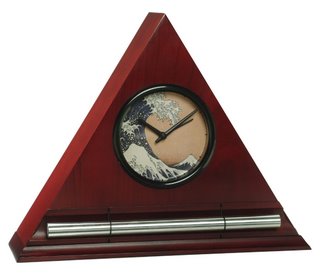 The Zen Alarm Clock transforms mornings, awakening you gradually with a series of gentle acoustic chimes Once you use a Zen Clock nothing else will do Now & Zen – The Zen Alarm Clock Headquarter Store
1638 Pearl Street
Boulder, CO 80302
(800) 779-6383
Posted in Chime Alarm Clocks, sleep, Sleep Habits, wake up alarm clock
 How Do We Find Balance in Life - Harunobu Suzuki, A girl Collecting Chrysanthemum Dem by the Stream The art of life balance requires creativity. If you push too hard you will miss its subtle rewards. Navigating easily through life requires a sense of curiosity and playfulness, like that of a child. This doesn’t excuse you from taking life seriously, simply that you release the illusion that you can control everything. By exerting control over everything, you may end up limiting yourself. The art of life balance requires dedicated time for having fun and observing the world around you. You may be surprised at what you find if you do.
 Meditation - A Stillness Practice Try a Stillness Practice Like Meditating:
Meditation is generally an inwardly oriented, personal practice, which individuals do by themselves. Meditation may involve invoking or cultivating a feeling or internal state, such as compassion, or attending to a specific focal point. The term can refer to the state itself, as well as to practices or techniques employed to cultivate the state. There are dozens of specific styles of meditation practice; the word meditation may carry different meanings in different contexts. Meditation has been practiced since antiquity as a component of numerous religious traditions. A 2007 study by the U.S. government found that nearly 9.4% of U.S. adults (over 20 million) had practiced meditation within the past 12 months, up from 7.6% (more than 15 million people) in 2002.
Although meditation can be done in almost any context, practitioners usually employ a quiet, tranquil space, a meditation cushion or bench, and some kind of timing device to time the meditation session. Ideally, the more these accoutrements can be integrated the better. Thus, it is conducive to a satisfying meditation practice to have a timer or clock that is tranquil and beautiful. Using a kitchen timer or beeper watch is less than ideal. And it was with these considerations in mind that we designed our digital Zen Alarm Clock and practice timer. This unique “Zen Clock” features a long-resonating acoustic chime that brings the meditation session to a gradual close, preserving the environment of stillness while also acting as an effective time signal. The Digital Zen Clock can be programmed to chime at the end of the meditation session or periodically throughout the session as a kind of sonic yantra. The beauty and functionality of the Zen Clock/Timer makes it a meditation tool that can actually help you “make time” for meditation in your life.
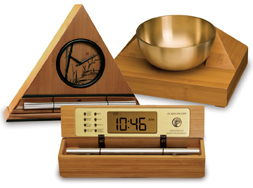 Timers for Meditation and Yoga - Progressive Acoustic Chimes
Now & Zen’s Meditation Timer Store
1638 Pearl Street
Boulder, CO 80302
(800) 779-6383
Posted in Bamboo Chime Clocks, wake up alarm clock, Well-being, Yoga Timer, Yoga Timers by Now & Zen
 Use Your Yoga Timer to Cure a Headache Got a pounding headache? This sequence of supported poses can send it packing.
When a boa constrictor of stress creeps up your shoulders, circles your neck, and encases your skull, you may be more tempted to reach for the jaws of life than your yoga mat. But don’t underestimate the power of asana to unlock the vise grip of a tension headache; try this sequence of forward bends and reclining poses. The idea, says Northern California yoga teacher Richard Rosen, is to soothe the pulsating brain with internally focused forward bends. At the same time, by supporting the head, you’re giving the back of the neck permission to release. “When you get a tension headache, often the third eye at the place where the skull meets the neck is squeezed shut,” he says. Open that eye wide by letting the nape of your neck drift down toward your shoulders and imagining the base of your skull floating up toward your crown.
- Balasana (Child’s Pose) with head on bolster or block
- Janu Sirsasana (Head-to-Knee Pose) with head supported
- Downward-Facing Dog Pose (Adho Mukha Svanasana) with head on block
- Uttanasana (Standing Forward Bend) with head on padded chair, block, or other support
- Supta Baddha Konasana (Reclining Bound Angle Pose)
- Setu Bandha Sarvangasana (Bridge Pose) with block
- Viparita Karani (Legs-up-the-Wall Pose)
- Savasana (Corpse Pose)
Although meditation & yoga can be done in almost any context, practitioners usually employ a quiet, tranquil space, a meditation cushion or bench, and some kind of timing device to time the meditation session. Ideally, the more these accoutrements can be integrated the better. Thus, it is conducive to a satisfying meditation practice to have a timer or clock that is tranquil and beautiful. Using a kitchen timer or beeper watch is less than ideal. And it was with these considerations in mind that we designed our digital Zen Alarm Clock and practice timer. This unique “Zen Clock” features a long-resonating acoustic chime that brings the meditation session to a gradual close, preserving the environment of stillness while also acting as an effective time signal. The Digital Zen Clock can be programmed to chime at the end of the meditation session or periodically throughout the session as a kind of sonic yantra. The beauty and functionality of the Zen Clock/Timer makes it a meditation tool that can actually help you “make time” for meditation in your life.
adapted from YogaJournal.com by Catherine Guthrie
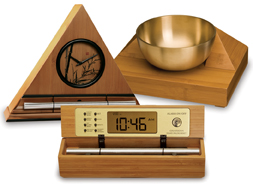 Yoga & Meditation Timers from Now & Zen, Inc. Now & Zen’s Yoga & Meditation Timer Store
1638 Pearl Street
Boulder, CO 80302
(800) 779-6383
Posted in Bamboo Chime Clocks
 Choose a Gentle Zen Timer for Your Partner Yoga Practice Partnering up in yoga class can deepen your practice and connect you to yourself and your fellow yogis.
We were only a few minutes into the yoga class when the teacher uttered the five words I dread hearing: “OK, everybody, find a partner!” As we students sized up one another with varying degrees of wariness, the teacher demonstrated what she wanted us to do by leaping lightly onto the thighs of a supine volunteer and balancing there, as gracefully as a cat, her feet grounding and rotating her partner’s thighs inward.
Full disclosure: My approach to partnering exercises in yoga class has generally been of the “Lie back and think of England” variety, though I usually participate as gamely as I can. But this particular caper was just too much for my inner Woody Allen. What if my partner or I slipped and fell? What if I had bone density issues I didn’t know about? What if my partner outweighed me, or I her? What about my bad knee? Where were the feet supposed to go? Concerned about my safety, and uncomfortable turning to the person next to me and saying, “It’s nice to meet you. I’m now going to place my bare feet on your thighs,” I declined to participate.
Unlike “partner yoga,” in which two people come together to create a single pose, often practiced with a friend or significant other, “partnering” takes place when your teacher asks you to consider the student next to you as a human prop to help you get into a pose more fully, isolate a particular action, or help you balance. A teaching tool in many styles of yoga classes, partnering tends to inspire strong feelings among practitioners: Mention the subject to a group of yoga students, and the room is likely to erupt in exclamations as people tell their stories of awkward moments, contact with another person’s sweat or stinky feet, and even injuries.
 Dos damas paseando - artista Shunshô Katsukawa Here at the Yoga Journal office, where we practice yoga together every day, we ask that our teachers not do partnering exercises in class—not all of us are comfortable with the degree of physical intimacy involved in sharing sweat with a supervisor, or gripping a co-worker from behind. But the frequency of partnering exercises in the other classes I attended made me wonder whether my resistance to them could be holding me back. What was I missing by participating reluctantly, or opting out entirely? When I started asking around, I discovered that there’s no simple answer to that question, since partnering exercises themselves, and people’s attitudes toward them, vary greatly. A few teachers told me that they never teach partnering exercises in class, because of the risk of injury. For other teachers and practitioners, asking, “How do you feel about partnering?” was like asking, “How do you feel about yoga?”—so central does the one practice seem to be to the other. Still others described partnering, when done safely and skillfully, as a useful tool for deepening your practice.
Use our unique “Zen Clock” which functions as a Yoga Timer. It features a long-resonating acoustic chime that brings your meditation or yoga session to a gradual close, preserving the environment of stillness while also acting as an effective time signal. Our Yoga Timer & Clock can be programmed to chime at the end of the meditation or yoga session or periodically throughout the session as a kind of sonic yantra. The beauty and functionality of the Zen Clock/Timer makes it a meditation tool that can actually help you “make time” for meditation in your life. Bring yourself back to balance.
adapted from YogaJournal.com by Charity Ferreira
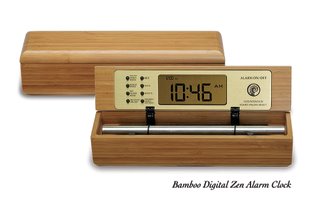 Yoga Timer for Partner Yoga in Bamboo Now & Zen’s Yoga Timer Store
1638 Pearl Street
Boulder, CO 80302
(800) 779-6383
Posted in Meditation Timers, Meditation Tools, mindfulness practice, Yoga Timer, Yoga Timers by Now & Zen
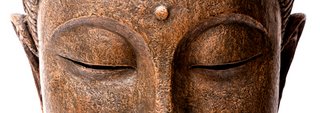 Buddha Meditation can be challenging. Even after you’ve had a taste of its benefits and long for those sweet moments of inner calm, clarity, and deep connection, it can be hard to just sit. If you’re like most people, you may find that one day your mind is speeding into the future, your body feels agitated, and you can’t sit still, while the next day you’re so lethargic that you can hardly stay awake. Don’t be discouraged. Resting with ease in meditation doesn’t magically happen. But there is a path to help you get there: Through your breath, you can tap into the flow ofprana (life force) to increase, decrease, or focus your energy, bringing you into a state of balance and making it easier to sit with relaxed attention in meditation.
Prana flows along energy channels in the body called nadis.The three main nadis are the sushumna, the central channel along the spine through whichkundalini, your spiritual energy, ascends; and the ida and pingala, which start on either side of the sushumna and spiral upward in a double-helix pattern around it.
Prana moves with breath and mind (which includes your thoughts, mental images, and emotions). A change in one affects the other. Through the breath, you can open, regulate, and direct the flow of prana, which, in turn, will stabilize the mind and body for meditation.
Depending on your mood and energy level, one of the following asana and pranayama practices can help you move from agitation to relaxation, from lethargy to lightness, from fragmentation to integration—so that you might ease gently into meditation. (To find a variety of meditation practices, click here.) The emphasis in each of the following practices is on linking slow, mindful movements with the breath and creating dynamic, flowing transitions to integrate mind and body. Each series is repeated several times, during which the length of the exhalation and inhalation—and the pauses in between—change progressively.
Sometimes you need to wake up, and sometimes you need to calm down. Often you need a combination of awakening, calming, and focusing energies. But to understand your needs, it’s essential to spend some time discovering what state your energy is in.
 Meditation - Choose a Gentle Tibetan Bell-like Gong for a Timer How Do You Feel?
Begin by lying on your back with your legs extended. Fill your body with awareness, as if you were filling a glass with water. Notice how your body responds. Does it begin to release and relax, or is there resistance? Close your eyes and feel the weight of your skull and pelvis, the contact of your back on the floor. Are there places that pull away from the floor and areas that are more in contact?
Then mentally scan your body one area at a time. Begin with your toes and travel up to your legs, pelvis, spine, lower and upper back, and shoulders, then down your arms and hands, and back up your arms to your neck and head. Are there areas of discomfort, places that feel stiff or more spacious, or parts that feel warm, cold, or numb? Some areas of holding are so habitual that we skip over them without noticing; let your attention gently tap into those places. As you scan your body, see whether a running commentary is going on in your head. Try not to judge or analyze what you discover. Instead, simply notice what is present. Now bring your focus to the central column of your spine. Imagine a wide river from the base of your spine to the base of your skull. Does the river flow freely? Are there areas where it’s blocked, narrowed, or stagnated?
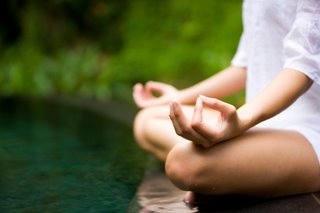 Meditation for Relaxation Next, bring your awareness to your entire body at once. Notice if there are any strong sensations remaining, areas of the body calling for attention. Now allow your mind to draw into the breath. Notice the quality, texture, and rhythm of your breathing. Is it short and choppy, long and smooth, or somewhere in between? Do you tend to hold your breath after breathing in or out? Notice the relationship between your breath, body, and thoughts.
Now check out the flow of thoughts moving through your mind. Do you have a perpetual to-do list? Are you rehashing some conversation or planning the future? Are you spacing out, or do you feel sharp and clear? Try not to make judgments—simply observe. As certain thoughts come, is there a physical response in your body or your breath?
Next, place one hand on your heart. Take a moment to feel the beating of your physical heart, your chest rising and falling with your breath. Let your awareness settle into its rhythm, then drop your attention in a little deeper, sensing the emotional heart. Is there sadness, joy, or anxiety? Don’t go deeply into any one feeling; just get a sense of the overall tone that is present at this moment. Make note of the relationship between your emotional state and your breath, between your feelings and your physical body.
Finally, feel all of these dimensions at once: physical, energetic, mental, and emotional. Notice the part of you that is observing—your unchanging awareness. Now rest in this spacious awareness.
Remember, your observations may change from day to day, depending on the hour, your schedule, and all of the other variables that affect your energy and mood. If you observed that your breathing was labored, your mind dull, and your heart heavy, try an energizing practice. Was your breathing rapid, your mind racing, and your body tense? Then a calming practice might be most appropriate. Feeling scattered and disoriented? A focusing practice can help you come into balance. Listen to your mind, body, and heart for guidance about a movement practice that can bring you into balance, ready to sit and draw your attention inward.
Use our unique “Zen Clock” which functions as a Yoga and Meditation Timer. It features a long-resonating acoustic chime that brings your meditation or yoga session to a gradual close, preserving the environment of stillness while also acting as an effective time signal. Our Yoga Timer & Clock can be programmed to chime at the end of the meditation or yoga session or periodically throughout the session as a kind of sonic yantra. The beauty and functionality of the Zen Clock/Timer makes it a meditation tool that can actually help you “make time” for meditation in your life. Bring yourself back to balance.
adapted from YogaJournal.com by Janice Gates
 Gong Timer for Meditation Now & Zen’s Gong Timer Store
1638 Pearl Street
Boulder, CO 80302
(800) 779-6383
Posted in Meditation Timers, Meditation Tools, mindfulness practice, Natural Awakening
 Buddha Set aside half an hour.
Begin by calling to mind a sage or saint, or another human being you deeply admire. It should be someone you have a feeling for and whose teachings you understand—Jesus, or Buddha, Gandhi, St. Teresa of Avila, the Baal Shem Tov, or your own teacher, if that teacher has been a reliable example of enlightenment.
If no one comes to mind, choose one of the qualities of enlightened consciousness—such as compassion or love. Now, think deeply about that person or the quality you want to embody. Consider how it might be to look through that person’s eyes. If it’s a quality, ask yourself, “How would it be at this moment to look through the eyes of love?” Ask yourself, “How did this being treat others?” How might he or she behave while living your life? (Yes, what would Jesus do?) Imagine facing a challenge, a big conflict, the desertion of someone close. How would that person handle it?
Now, close your eyes and imagine that the spirit of that person (or that quality) inhabits your body. Inhale, thinking to yourself, “Christ’s love lives within me, as my love,” or “Buddha’s state of enlightenment is my enlightenment,” or “The courage of Gandhi is my courage.” Exhale, thinking, “That inner state fills my body.”
Do this for a few moments. Then ask yourself, “How would I move through the world if I truly embodied the qualities of this being? How would I treat myself? How would I be with my partner? my kids? my parents? the people on the bus? What would it be like to interact with others?”
Let your imagination completely open to this practice, imagining yourself enlightened, saturated with love. For the remainder of the half hour, act out of that experience. Be the great being you’re imagining yourself to be. Act out the quality you want to imbibe. Do this for half an hour a day for a week and see if you notice the effect.
Although meditation can be done in almost any context, practitioners usually employ a quiet, tranquil space, a meditation cushion or bench, and some kind of timing device to time the meditation session. Ideally, the more these accoutrements can be integrated the better. Thus, it is conducive to a satisfying meditation practice to have a timer or clock that is tranquil and beautiful. Using a kitchen timer or beeper watch is less than ideal. And it was with these considerations in mind that we designed our digital Zen Alarm Clock and practice timer. This unique “Zen Clock” features a long-resonating acoustic chime that brings the meditation session to a gradual close, preserving the environment of stillness while also acting as an effective time signal. The Digital Zen Clock can be programmed to chime at the end of the meditation session or periodically throughout the session as a kind of sonic yantra. The beauty and functionality of the Zen Clock/Timer makes it a meditation tool that can actually help you “make time” for meditation in your life.
adapted from YogaJournal.com by Sally Kempton
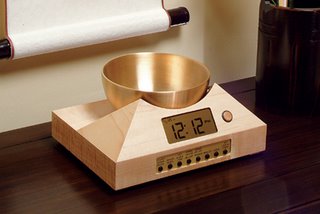 Zen Gong Alarm Clock and Timer for Meditation and Yoga Now & Zen’s Gong Meditation Timer
1638 Pearl Street
Boulder, CO 80302
(800) 779-6383
Posted in Chime Alarm Clocks, Meditation Timers, Meditation Tools, mindfulness practice
 KOITSU -- Full Moon at Akashi Beach - Choose an Alternative to a Snooze Button Alarm Clock Kick your insomnia for good by creating a simple and restful nighttime routine.
Whether it’s yoga to reduce muscle tension, breathing to slow the heart rate, or an herbal massage to calm a racing mind, a simple routine can be the most effective and safest road to a better night’s sleep. There is growing evidence that small behavioral changes can make a big difference in getting some good shuteye. A 2006 study published in the Journal of the American Medical Association showed that participants who made modifications like reducing stimuli in the bedroom and learning relaxation techniques improved their sleep more than those who took drugs.
The first step to feeling well rested is to institute a regular bedtime. Maintaining consistency will help keep your circadian rhythms—the biological changes that happen every 24 hours—steady. Eventually, your body will naturally understand and crave sleep during these hours.
The next step is to create some space between your busy day and sleep time. “You can’t just work until 9 at night, and then stick your head on the pillow and fall asleep,” Khalsa says. So turn off the television, computer, and radio. Cut down on or eliminate evening classes and exercise that leaves you feeling amped up. When you come home, honor this transition by playing relaxing music, lighting candles, or putting on your favorite pajamas. Think of the yoga precept ofpratyahara: Withdraw your senses in order to turn inward.
Once you’ve chosen your specific nighttime ritual, repeat it every night to cue your body that it’s time for sleep. Khalsa says that after a few weeks of practice, your sleep will improve. “These things don’t work instantly, but over time you normalize arousal and sleep starts to get better.” And as opposed to suffering from side effects such as headaches, dizziness, daytime drowsiness, and long-term dependence on drugs, you’ll feel better overall, instead of worse, with your nighttime routine. “It improves individuals on a holistic level, and other problems that they might have had also might start to dissipate,” says Khalsa. Now that sounds like a side effect we can all live with.
 Chime Alarm Clocks for a Progressive, Peaceful Awakening Waking up in the morning should be as pleasant as falling asleep at night. The Zen Alarm Clock’s gradual, gentle awakening is transformative.
Boulder, Colorado—an innovative company has taken one of life’s most unpleasant experiences (being startled awake by your alarm clock early Monday morning), and transformed it into something to actually look forward to. “The Zen Alarm Clock,” uses soothing acoustic chimes that awaken users gently and gradually, making waking up a real pleasure. Rather than an artificial recorded sound played through a speaker, the Zen Clock features an alloy chime bar similar to a wind chime. When the clock’s alarm is triggered, its chime produces a long-resonating, beautiful acoustic tone reminiscent of a temple gong. Then, as the ring tone gradually fades away, the clock remains silent until it automatically strikes again three minutes later. The frequency of the chime strikes gradually increase over ten-minutes, eventually striking every five seconds, so they are guaranteed to wake up even the heaviest sleeper. This gentle, ten-minute “progressive awakening” leaves users feeling less groggy, and even helps with dream recall.
adapted from Yoga Journal by Nora Isaacs
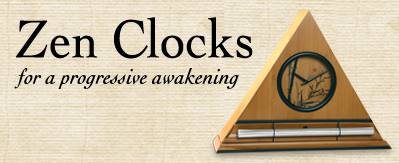 Zen Clocks for a Progressive Awakening Now & Zen’s Chime Alarm Clock Store
1638 Pearl Street
Boulder, CO 80302
(800) 779-6383
Posted in Bamboo Chime Clocks, Natural Awakening, sleep, Sleep Habits
 Wake up refreshed, love your alarm clock, transform your mornings with The Zen Alarm Clock's progressive awakening with gentle chimes. If you haven’t woke up feeling refreshed in who knows how long, you can blame your gadgets from ruining your slumber.
A new study by the National Sleep Foundation (NSF) shows that people are overwhelmingly using technology before sleep, which has proven to disrupt sleeping patterns. Ninety-five percent of the people surveyed admitted to using some sort of device in the hour before sleep – and that doesn’t even count the people woken up by text messages, phone calls or emails during the night.
“Artificial light exposure between dusk and the time we go to bed at night suppresses release of the sleep-promoting hormone melatonin, enhances alertness and shifts circadian rhythms to a later hour—making it more difficult to fall asleep,” Doctor Charles Czeisler of Harvard Medical School and Brigham and Women’s Hospital explained in the press release. “This study reveals that light-emitting screens are in heavy use within the pivotal hour before sleep. Invasion of such alerting technologies into the bedroom may contribute to the high proportion of respondents who reported that they routinely get less sleep than they need.”
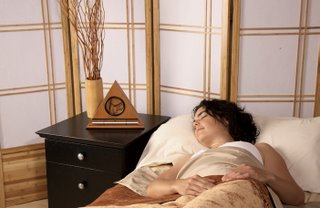 Wake up with gradual, beautiful acoustic chimes. The Zen Alarm Clock transforms your mornings and gets you started right, with a progressive awakening
Lack of sleep is a problem for everyone since sleepiness can affect work and school performance, mood, driving habits, sex life and your health. It’s especially bad for the younger generation because they are still developing. Interactive technologies, such as games, surfing the Web and talking on a cell phone can be particularly disruptive because they stimulate the brain and stop you from beginning the sleep onset process.
The study revealed:
– One in ten said they were woken up by a text message or call, with 20 percent of those people saying it happens more than once a week.
– Sixty-seven percent of baby boomers surveyed admitted they watched TV in the hour before bed, with only 49 percent of people aged 19 to 29 tuning in.
– Six out of ten people used their laptop before sleeping at least once a week. Most guilty of this were the 13- to 18-year-olds: 55 percent copped to the deed.
– Only one-third of people 13 to 29 played video games before bed. The number drastically drops in the older age groups.
– The average American copes by taking naps and drinking caffeinated beverages. We’re averaging three 12-ounce caffeinated beverages per weekday. Slightly more than half of the people under 29 said they take at least one nap during the work week or school week, compared to 40 percent of people 30 and 64.
Scientists suggest doing wind down activities before bed, sticking to a strict sleep schedule and exposing yourself to bright light in the morning, but avoiding it at night. Try not to take late night naps or drink caffeinated beverages right before bed. If you’re someone who constantly worries, keep a physical – not on your computer – worry journal that you can jot things down in the middle of the night if you wake up.
And, don’t be afraid to turn off your cell phone: Whatever it is, it can wait until the morning.
adapted from Time.com, by Michelle Castillo
Boulder, Colorado—an innovative company has taken one of life’s most unpleasant experiences (being startled awake by your alarm clock early Monday morning), and transformed it into something to actually look forward to. “The Zen Alarm Clock,” uses soothing acoustic chimes that awaken users gently and gradually, making waking up a real pleasure.
Rather than an artificial recorded sound played through a speaker, the Zen Clock features an alloy chime bar similar to a wind chime. When the clock’s alarm is triggered, its chime produces a long-resonating, beautiful acoustic tone reminiscent of a temple gong. Then, as the ring tone gradually fades away, the clock remains silent until it automatically strikes again three minutes later. The frequency of the chime strikes gradually increase over ten-minutes, eventually striking every five seconds, so they are guaranteed to wake up even the heaviest sleeper. This gentle, ten-minute “progressive awakening” leaves users feeling less groggy, and even helps with dream recall.
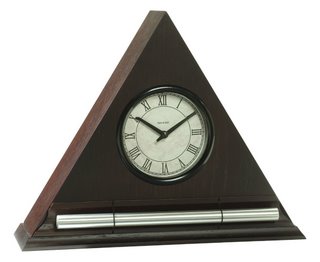 The Zen Alarm Clock transforms mornings, awakening you gradually with a series of gentle acoustic chimes Once you use a Zen Clock nothing else will do Now & Zen – The Soothing Chime Alarm Clock Store
1638 Pearl Street
Boulder, CO 80302
(800) 779-6383
Posted in Uncategorized
« Previous Entries
Next Page »
|
|
|
|